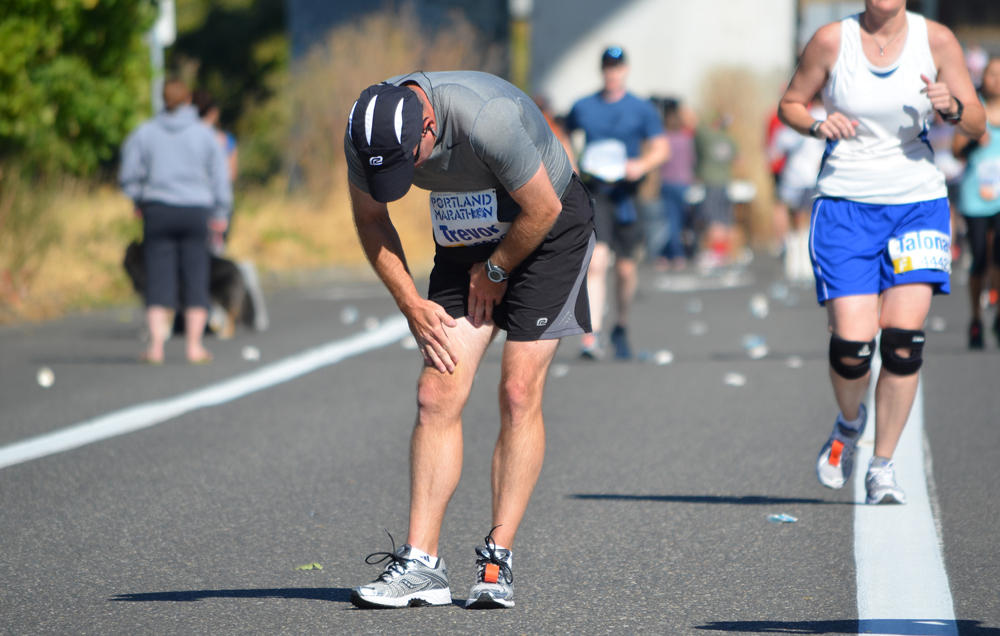In this post we explore whether getting older increases your risk of injury, or if there are other, more important factors to consider.

The majority of the people I work with have chronic injuries which have so far proven difficult to resolve. Inevitably some will ask me if their age is a factor.
Interestingly these people can be anything from 35 upwards. Most have led an active life and are now concerned their present issues are indicative of a broader physical decline.
I find males are particularly prone to these concerns. Generally men attach more importance to their physical capabilities, as they are one way they tend to define themselves. ‘If I can’t lift things then what kind of man am I?’ Is a common refrain according to Dr Ken Robbins, Professor of Psychiatry at the University of Wisconsin.
Equally it’s possible that a major part of your identity (male or female) comes from the activities you participate in. You think of yourself as a triathlete, a runner, or even just fit. Not being able to train may challenge who you think you are.
These feelings may be reinforced if you haven’t managed to find answers to your current issues. Being passed from pillar to post can lead you to believe that your situation is out of your control.
So that’s the size of the problem. Now I need to show you the solution otherwise this is going to be a depressing post.
Don’t worry, I’ve got that.
The problem is not so much age but your capacity
If you breach the limits of your muscular system’s capacity you will start to have problems no matter how old you are.
This can happen in a single incident, or more commonly it will occur over time. It’s the reason why you can be an active 35 year old and feel worse than your friend who spends most of their time watching sport rather than playing it.
This also explains why the story many of us have in our heads about ageing and loss of function isn’t all that accurate.
You don’t know how much function you’re losing until you optimise it first
So you have two options:
1) Pull up a chair, get a beer from the fridge and start watching more sport. Thereby reducing the demands on your muscular system.
Or
2) Increase your muscular system’s capacity.
Are you thinking the latter? Excellent. There’s always time for a beer but perhaps later.
Resistance training
The most effective way to increase the capacity of your muscular system is with an appropriate resistance training programme. I use the word appropriate because most resistance training programmes are anything but.
The key is to match the demands of the programme to your current capacity. In other words, use the right weight and the right exercise.
Most injury rehab programmes start with exercises that are too complex such as the single leg squat. These exercises involve too many joints and give your nervous system the opportunity to compensate around weak muscles. As a result they do little to get you stronger in any meaningful way.
The second biggest mistake people make is using speed to compensate around weakness.
Look around any gym and you’ll see people moving weights at speed. This won’t do much except increase your risk of injury. Aim for a repetition speed of 5 seconds one way and 5 seconds in the other direction and you’ll notice how you have to reduce the resistance to achieve this.
Of course it’s very difficult to tell you precisely which exercises to do without knowing exactly where you’re weak (we use Muscle Activation Techniques (MAT) to explore this), but if you aim for a fairly comprehensive programme of lower body exercises to begin with, you won’t go too far wrong.
Most of my clients do well with the following exercises provided they can be performed without pain. Aim for a resistance that leads to moderate fatigue by repetition 6 at the suggested speed above. One well executed set is enough.
Calf raises
Leg extension
Leg curl
Hip abduction
Hip adduction
Leg press
Remember you can’t go wrong by getting stronger. It’s just a question of accurately targeting what’s weak and going after it the right way.
Time for that beer. Cheers.